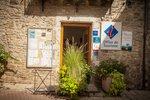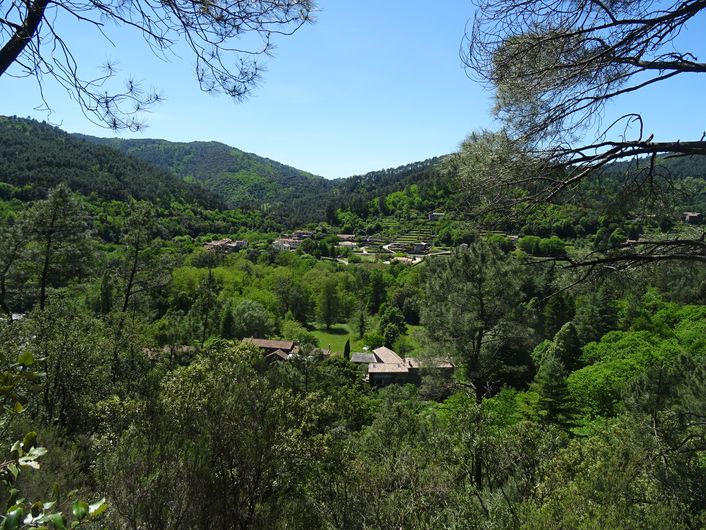
Le Chambonnet
4 points of interest
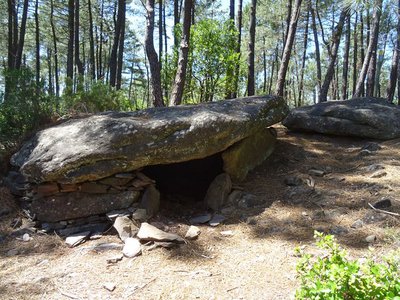
Dolmen des Chams - © JF.Raulet  History
HistoryThe Dolmen des Chams
Dolmens are ancient collective tombs as well as sites of ancestor worship. On this site, we have a handsome rock table resting on a curving wall, covered with soil on the outside. Some think that dolmen builders developed a different technique here; others think that the original dolmen was reworked into a shepherd’s shelter; others still do not consider it a dolmen at all but a rock conducive to creating accommodation. Whatever the truth may be, the edifice bears witness to a very ancient human presence in this area, well before the common era (-4200 to -3800).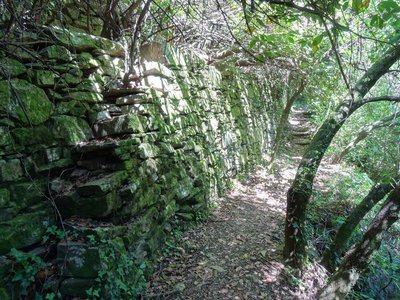
Mur en pierre sèche - © JF. Raulet AgricultureA built mountain
Look closely at the mountains around you. The abundant vegetation covers thousands of remnants of drystone walls: they are the vestiges of a veritable peasant civilisation. The Cévenols have never shied away from the effort of turning this stony summit into a mountain covered in terraced gardens. The aim was to retain the soil and water. It is only thanks to this effective method that farming was able to persist in the Middle Ages, here as in other Mediterranean countries.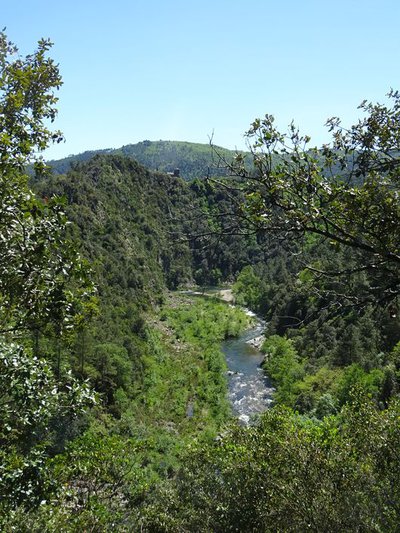
La haute vallée de la Cèze - ©JF. Raulet  Fauna
FaunaNatura 2000 site Upper Cèze Valley
You are in a Natura 2000 site: the Upper Cèze and Luech Valleys. Animal and plant species thrive in this natural environment, where they are specifically monitored and protected. The white-clawed crayfish, beaver, otter and Mediterranean barbel can be found here. A total of around 20 habitats of Community interest have been identified. The variations in hydraulic regime and the weather – which can be substantial in the Cévennes – have enriched these environments, which also abound in hay meadows and a dense forest habitat.
Eglise romane de Peyremale - © JF.Raulet  Architecture
ArchitectureThe Romanesque church of Peyremale
From the 11th century onwards, monastic orders multiplied in France and built numerous new priories, churches and abbeys. The upper Cèze valley was part of this movement, and Peyremale church is an unmissable example of Romanesque architecture, in total harmony with the landscape. Built on top of a Carolingian chapel, of which the choir and window probably remained, it is believed to date largely from the 12th century, with some more recent work. Its bell gable signifies that, like the other Romanesque churches of the upper Cèze valley, it has its roots in the architecture of the Auvergne rather than Provence.
Description
Starting at "BORDEZAC", head towards "LE GENÊT" via "Bordezac-Croix", "Le Rouve", "Le Boual", "Le Champlat" and "Les Chams" for a return trip to the dolmen of that name, before continuing towards "Chabot" until you reach "LE GENÊT". Continue towards "Le Chambonnet","Ligne de Crête", "Le Haut Chanet" to return to "LE GENÊT". Return to "BORDEZAC" via "Le Boual", "Le Rouve" and "Bordezac-Croix".
This hike is taken from the guidebook Cévennes Haute Vallée de la Cèze, published by the Communauté de communes Cèze Cévennes as part of the collection Espaces Naturels Gardois and the label Gard Pleine Nature.
- Departure : Bordezac village: at the mairie (town hall)
- Arrival : Bordezac village: at the mairie (town hall)
- Towns crossed : Bordezac and Peyremale
Forecast
Altimetric profile
Recommandations
Information desks
Tourism office CezeCévennes, Bessèges
14 rue de la République, 30160 Bessèges
This office is part of the National Park's associated tourist-information network, whose mission is to provide information on, and raise awareness of, the sites and events as well as the rules that must be observed in the National Park's central zone.
Open year-round
Tourism office Cèze-Cévennes Saint-Ambroix
Place de l'ancien Temple, 30500 Saint-Ambroix
This office is part of the National Park's associated tourist-information network, whose mission is to provide information on, and raise awareness of, the sites and events as well as the rules that must be observed in the National Park's central zone.
Open year-round
Transport
Access and parking
Parking :
Calculateur d'itinéraire Lio
Utilisez le calculateur liO pour organiser votre trajet en région Occitanie.
Autres régions
Calculez votre itinéraire en Auvergne Rhône Alpes sur Oùra
Biodiversité autour de l'itinéraire
Source
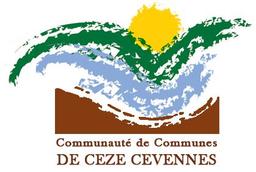

Report a problem or an error
If you have found an error on this page or if you have noticed any problems during your hike, please report them to us here:


